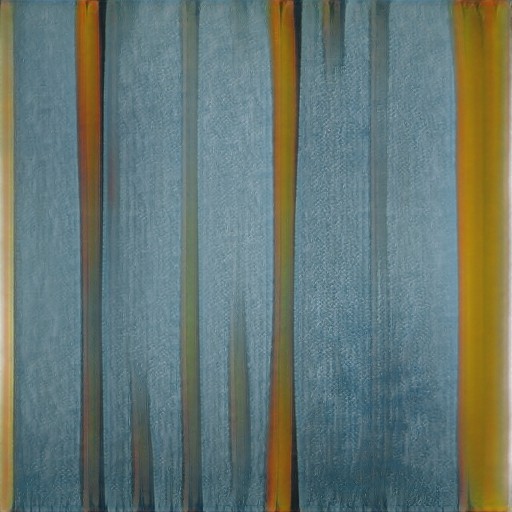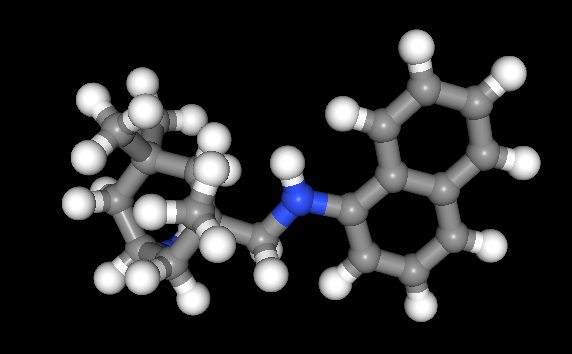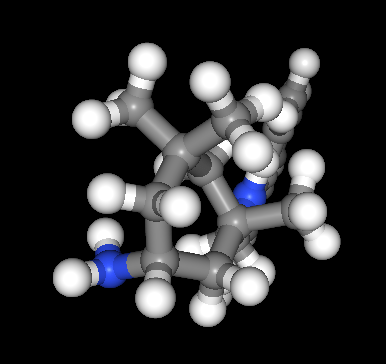TOPIC: JULIA
Getting custom Python imports to work in Visual Studio Code
18th February 2022While I continue to use Spyder as my preferred Python code editor, I also tried out Visual Studio Code. Handily, this Integrated Development Environment also has facilities for working with R and Julia code as well as Markdown text editing and adding the required extensions is enough for these applications; it helps that there is an unofficial Grammarly extension for content creation.
My Python code development makes use of the Pylance extension, and it works a little differently from Spyder when it comes to including files using import statements. Spyder will look into the folder where the base script is located, but the default behaviour of Pylance is that it looks in the root path of your workspace. This meant that any code that ran successfully in Spyder failed in Visual Studio Code.
To solve this issue, I added the location using the python.analysis.extraPaths setting for the workspace. I opened Settings by going to File > Preferences > Settings in the menu. I typed python.analysis.extraPaths in the search box. This showed me the correct section. I clicked on Add Item, entered the required path, and clicked OK. This resolved the problem, and everything worked properly afterwards.
Broadening data science horizons: Useful Python packages for working with data
14th October 2021My response to changes in the technology stack used in clinical research is to develop some familiarity with programming and scripting platforms that complement and compete with SAS, a system with which I have been programming since 2000. While one of these has been R, Python is another that has taken up my attention, and I now also have Julia in my sights as well. There may be others to assess in the fullness of time.
While I first started to explore the Data Science world in the autumn of 2017, it was in the autumn of 2019 that I began to complete LinkedIn training courses on the subject. Good though they were, I find that I need to actually use a tool to better understand it. At that time, I did get to hear about Python packages like Pandas, NumPy, SciPy, Scikit-learn, Matplotlib, Seaborn and Beautiful Soup though it took until of spring of this year for me to start gaining some hands-on experience with using any of these.
During the summer of 2020, I attended a BCS webinar on the CodeGrades initiative, a programming mentoring scheme inspired by the way classical musicianship is assessed. In fact, one of the main progenitors is a trained classical musician and teacher of classical music who turned to Python programming when starting a family to have a more stable income. The approach is that a student selects a project and works their way through it, with mentoring and periodic assessments carried out in a gentle and discursive manner. Of course, the project has to be engaging for the learning experience to stay the course, and that point came through in the webinar.
That is one lesson that resonates with me with subjects as diverse as web server performance and the ongoing pandemic supplying data, and there are other sources of public data to examine as well before looking through my own personal archive gathered over the decades. Though some subjects are uplifting while others are more foreboding, the key thing is that they sustain interest and offer opportunities for new learning. Without being able to dream up new things to try, my knowledge of R and Python would not be as extensive as it is, and I hope that it will help with learning Julia too.
In the main, my own learning has been a solo effort with consultation of documentation along with web searches that have brought me to the likes of Real Python, Stack Abuse, Data Viz with Python and R and others for longer tutorials as well as threads on Stack Overflow. Usually, the web searching begins when I need a steer on a particular or a way to resolve a particular error or warning message, but books are always worth reading even if that is the slower route. While those from the Dummies series or from O'Reilly have proved must useful so far, I do need to read them more completely than I already have; it is all too tempting to go with the try the "programming and search for solutions as you go" approach instead.
To get going, many choose the Anaconda distribution to get Jupyter notebook functionality, but I prefer a more traditional editor, so Spyder has been my tool of choice for Python programming and there are others like PyCharm as well. Because Spyder itself is written in Python, it can be installed using pip from PyPi like other Python packages. It has other dependencies like Pylint for code management activities, but these get installed behind the scenes.
The packages that I first met in 2019 may be the mainstays for doing data science, but I have discovered others since then. It also seems that there is porosity between the worlds of R and Python, so you get some Python packages aping R packages and R has the Reticulate package for executing Python code. There are Python counterparts to such Tidyverse stables as dplyr and ggplot2 in the form of Siuba and Plotnine, respectively. Though the syntax of these packages are not direct copies of what is executed in R, they are close enough for there to be enough familiarity for added user-friendliness compared to Pandas or Matplotlib. The interoperability does not stop there, for there is SQLAlchemy for connecting to MySQL and other databases (PyMySQL is needed as well) and there also is SASPy for interacting with SAS Viya.
While Python may not have the speed of Julia, there are plenty of packages for working with larger workloads. Of these, Dask, Modin and RAPIDS all have their uses for dealing with data volumes that make Pandas code crawl. As if to prove that there are plenty of libraries for various forms of data analytics, data science, artificial intelligence and machine learning, there also are the likes of Keras, TensorFlow and NetworkX. These are just a selection of what is available, and there is always the possibility of checking out others. It may be tempting to stick with the most popular packages all the time, especially when they do so much, but it never hurts to keep an open mind either.
Behind the scenes of a website refresh and security overhaul
11th October 2021Things have been changing on here. Much of that has been behind the scenes with a move to a new VPS for extra speed and all the upheaval that brings. It also gained me a better and more responsive system for less money than the old upgrade path was costing me. Extra work has gone into securing the website too, something that has taught me a lot as that has progressed. New lessons were added to older, and sometimes forgotten, ones.
The more obvious change for those who have been here before is that the visual appearance has been refreshed. A new theme has been applied with a multitude of tweaks to make it feel unique and to iron out any rough edges that there may be. This remains a WordPress-based website, and the new theme is a variant of the Appointee child theme of the Appointment theme. Since WordPress does only support child theming but not grandchild theming, I had to make a copy of Appointee of my own so I could modify things as I see fit.
To my eyes, things do look cleaner, crisper and brighter, so I hope that it feels the same to you. Like so many designs these days, the basis is the Bootstrap framework and that is no bad thing in my mind, though the standardisation may be too much for some tastes. What has become challenging is that it is getter harder to find new spins on more traditional layouts, with everything going for a more magazine-like appearance and summaries being shown on the front page instead of complete articles. That probably reflects how things are going for websites these days, which could make the next refresh a more home-grown effort, even if that is a while away yet.
As the website heads towards its sixteenth year, there is bound to be continuing change. In some ways, I prefer that some things remain unchanged, so I use the classic editor instead of Gutenberg because that works best for me. Block-based editing is not for me, since I prefer to tinker with code anyway. Still, not all of its influences can be avoided, leaving me to figure out the new widgets interface. While it did not feel that intuitive, I suppose that I will grow accustomed to it.
My interest in technology continues, even if it saddens me at this time and some things do not impress me; the Windows 11 taskbar is one of those, so I will not be in any hurry to move away from Windows 10. Still, the pandemic has offered its own learning, with virtual conferencing allowing one to lurk and learn new things. For me, this has included R, Python, Julia and DevOps among other things. That proved worthwhile during a time with many restrictions. All that could yield more content yet, and some already is on the way.
As ever, it is my own direct working with technology that yields some real niche ideas that others have not covered. With so many technology blogs out there, they may be getting less and less easy to find, yet everyone has their own journey, so I hope to encounter more of them. There remain times when doing precedes telling, which is how it is on here. It is not all about appearances, since content matters as much as it ever did.
A little bit of abstraction: The quiet utility of generated imagery
21st August 2021
Data science has remained in my awareness since 2017 though my work is more on its fringes in clinical research. In fact, I have been involved more in the standardisation and automation of more traditional data reporting than in the needs of data modelling such as data engineering or other similar disciplines. Much of this effort has meant the use of SAS, with which I have programmed since 2000 and for which I have a licence (an expensive commodity, it has to be said), but other technologies are being explored with R, Python and Julia being among them.
Though the change in technological scope does bring an element of excitement and new interest, there is also some sadness when tried and trusted technologies meet with newer competition and valued skills are no longer as career securing as they once were. Still, there is plenty of online training out there, and I already have collected some of my thoughts on this. The learning continues and the need for repositioning is also clear.


The journey also brought some curios to my notice. One of these is This Person Does Not Exist, a website building photos of non-existent faces using machine learning. Recently, I learned of others like it such as This Artwork Does Not Exist, This Cat Does Not Exist, This Horse Does Not Exist, and This Chemical Does Not Exist. The last of these probably should be entitled "This Molecule Does Not Exist (Yet)" since it is a fictitious molecular structure that has been created and what you get is an actual moving image that spins it around in three-dimensional space. The one with dynamically generated abstract art is the main inspiration for this piece and is of more interest to me, while the other two are more explanatory, though the horse website is not so successful in its execution and one can ask why we need more cat pictures.
To some, the idea of creating fake pictures may feel a little foreboding, and that especially applies to photos of people and the livelihoods of any content creators. Nevertheless, these sources of imagery have their legitimate uses, such as decorating websites or brochures, which is where my interest is piqued. After all, there are some subjects where pictures can be scarce, so any form of decoration that enlivens an article has to have some use. While technology websites like this one can feature images too with screenshots and device photos being commonplace, they can all look like each other, hence the need for a little more variety and having pictures often increases the choice of website themes as well since so many need images to make them work or stand out. As ever, being sparing with any innovations remains in order, which is how I approach this matter as well.